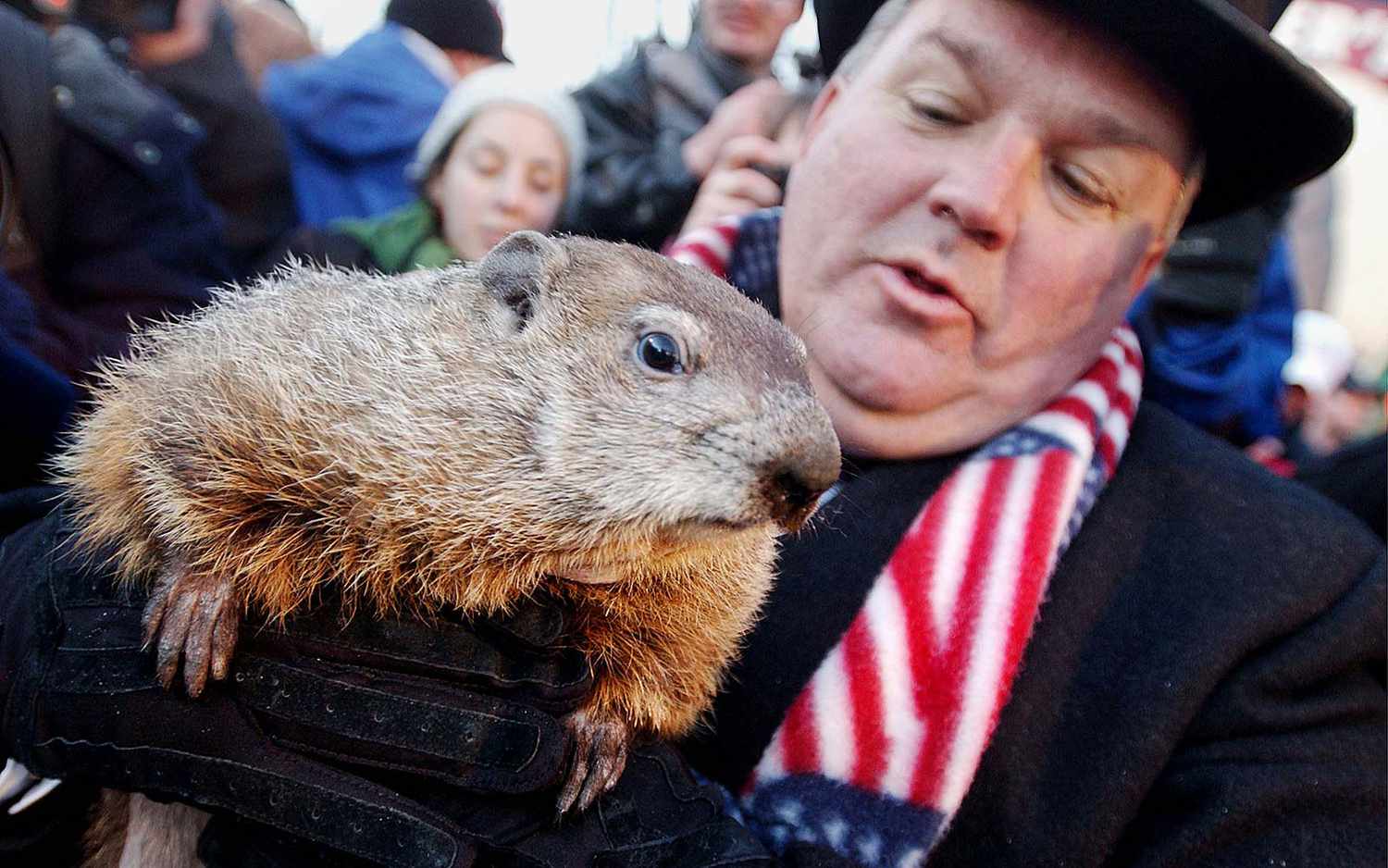Groundhog Day 2024: A Glimpse into Weather Predictions and Traditions
As February 2nd approaches, anticipation builds for one of the quirkiest yet cherished traditions in North America – Groundhog Day. Rooted in folklore and celebrated with enthusiasm, this annual event brings forth Punxsutawney Phil, the famous groundhog, to predict the weather and, in turn, captivate the nation’s attention.
The Origin of Groundhog Day:
The roots of Groundhog Day trace back to ancient European weather lore. Candlemas Day, observed on February 2nd, was believed to predict the remaining duration of winter based on the behavior of animals. German immigrants, settling in Pennsylvania, brought this tradition with them, eventually replacing the hedgehog with the more abundant groundhog.
Punxsutawney Phil – The Weather Prognosticator:
Punxsutawney Phil, the star of Groundhog Day, resides in Gobbler’s Knob in Punxsutawney, Pennsylvania. According to tradition, if Phil emerges from his burrow and sees his shadow, there will be six more weeks of winter. If not, an early spring is predicted. Phil’s weather predictions, of course, are purely for entertainment and not scientifically accurate.
The Ceremony at Gobbler’s Knob:
Thousands gather at Gobbler’s Knob before sunrise on February 2nd to witness the quirky ceremony. Phil is carefully extracted from his burrow and, in a moment of weather divination, makes his prediction. The event is accompanied by festivities, music, and a sense of camaraderie among attendees, showcasing the charm that has made Groundhog Day a cultural phenomenon.
Phil’s Track Record:
Punxsutawney Phil’s accuracy in predicting the weather is, unsurprisingly, a topic of humor rather than meteorological scrutiny. Phil’s shadow-spotting prowess has been inconsistent, with statistical analyses showing a success rate roughly equivalent to chance. Nevertheless, the whimsical nature of the tradition keeps people returning year after year.
Cultural Impact and Cinematic Legacy:
Groundhog Day has transcended its meteorological roots, becoming a symbol of life’s repetitive cycles. This theme was famously explored in the 1993 film “Groundhog Day,” starring Bill Murray. The movie follows a weatherman trapped in a time loop, reliving Groundhog Day repeatedly, offering a comedic yet philosophical take on self-improvement and the passage of time.
Local Groundhog Day Celebrations:
While Punxsutawney Phil is the most famous weather-prognosticating groundhog, various local celebrations occur across North America. Staten Island Chuck in New York City, Wiarton Willie in Canada, and General Beauregard Lee in Georgia are among the regional groundhogs offering their own predictions.
The Groundhog Day Effect:
Beyond its cultural significance, Groundhog Day has inspired discussions about the monotony of life and the potential for personal growth. The term “Groundhog Day Effect” is often used to describe situations where events seem to repeat endlessly, prompting individuals to reassess and reshape their lives.
As Groundhog Day 2024 approaches, communities will gather once again to witness Phil’s prediction, enjoy festivities, and embrace the enduring charm of this peculiar tradition. Regardless of the weather outcome, the legacy of Groundhog Day persists as a lighthearted celebration that brings communities together and offers a delightful break from the winter doldrums.
Groundhog Day Traditions: Beyond the Shadow of Punxsutawney Phil
Groundhog Day, celebrated annually on February 2nd, is more than just a quirky tradition involving a groundhog predicting the weather. While Punxsutawney Phil’s shadow may take center stage, various traditions associated with this day add depth and charm to the celebration. Let’s explore some of the unique and diverse Groundhog Day traditions that have evolved over the years:
1. Punxsutawney Phil’s Weather Prediction:
- The most famous tradition is, of course, Punxsutawney Phil’s weather forecast. According to folklore, if the groundhog sees its shadow, there will be six more weeks of winter. If not, an early spring is predicted. Thousands gather in Punxsutawney, Pennsylvania, each year to witness this age-old prediction.
2. Other Groundhogs Take the Stage:
- While Punxsutawney Phil is the most renowned weather prognosticator, he’s not alone. Other cities and towns across North America have their own groundhogs, each with its unique name and forecasting style. Wiarton Willie in Canada and Staten Island Chuck in New York are among the notable contenders.
3. Groundhog Day Breakfasts:
- Communities often come together for special Groundhog Day breakfasts. These events feature festive foods and provide an opportunity for locals to celebrate the occasion before heading out to see if their local groundhog has predicted an early spring.
4. Groundhog Parades:
- Parades are a common feature of Groundhog Day festivities. Floats, marching bands, and, of course, groundhog-themed displays fill the streets as communities celebrate the quirky holiday with lively processions.
5. Groundhog Day Proclamations:
- Some places take their Groundhog Day celebrations to the next level by officially proclaiming the day as a local holiday. Mayors or other officials may issue Groundhog Day proclamations, adding a touch of official recognition to the festivities.
6. Groundhog Day Movie Marathons:
- The 1993 film “Groundhog Day,” starring Bill Murray, has become a cult classic. Many people celebrate the day by indulging in movie marathons, watching the film repeatedly. Some even embrace the philosophy of the movie – learning, growing, and improving with each repeat.
7. Weather-Themed Celebrations:
- Some communities use Groundhog Day as an opportunity to celebrate all things weather-related. Meteorologists may give talks, and science centers might host weather-themed activities, engaging people in learning about meteorology.
8. Groundhog-Themed Treats:
- Bakeries and cafes often join the celebration by creating groundhog-themed treats. Cookies shaped like groundhogs, cupcakes adorned with shadowy predictions, and other culinary delights add a sweet touch to the festivities.
9. Groundhog Day Predictions Beyond Weather:
- In a lighthearted twist, some towns use their groundhogs to predict outcomes beyond weather. For example, they might forecast the success of a local sports team or predict upcoming events in the community.
Groundhog Day traditions, with their mix of folklore, community spirit, and a touch of whimsy, make this day more than just a weather prediction. Whether people are seeking meteorological insights or simply enjoying the festivities, Groundhog Day continues to capture the imagination of communities far and wide.
Groundhog Day Through History: Notable Events on February 2nd
While Groundhog Day is primarily known for Punxsutawney Phil’s weather predictions, history has witnessed various significant events on February 2nd. From scientific breakthroughs to cultural milestones, here’s a glimpse into some noteworthy occurrences on Groundhog Day:
1. 1848: The Treaty of Guadalupe Hidalgo Signed
- On February 2, 1848, the Treaty of Guadalupe Hidalgo was signed, officially ending the Mexican-American War. The treaty ceded a significant portion of Mexico’s territory to the United States, paving the way for the expansion of the nation.
2. 1887: The Beginnings of Groundhog Day in Punxsutawney
- The first official observance of Groundhog Day took place in Punxsutawney, Pennsylvania, in 1887. The tradition grew over the years, becoming an annual event featuring Punxsutawney Phil and capturing the nation’s imagination.
3. 1913: Grand Central Terminal Opens in New York City
- Grand Central Terminal, one of the world’s most iconic railway stations, officially opened its doors in New York City on February 2, 1913. The terminal stands as a testament to architectural grandeur and transportation history.
4. 1925: Serum Run to Nome
- On February 2, 1925, the heroic Serum Run to Nome was completed. Dog sled teams, including the famous Balto, delivered diphtheria antitoxin to Nome, Alaska, preventing a potential epidemic and showcasing the bravery of mushers and their dogs.
5. 1935: Leonard Keeler Administers First Polygraph Test
- Leonard Keeler, a pioneer in lie detection technology, administered the first polygraph test on February 2, 1935. The test was conducted on two criminals in Portage, Wisconsin, marking a significant moment in forensic science.
6. 1990: South African President F.W. de Klerk Announces Reforms
- On February 2, 1990, South African President F.W. de Klerk announced a series of reforms, including the end of apartheid and the release of political prisoner Nelson Mandela. This announcement set the stage for major political transformations in South Africa.
7. 2004: Mark Zuckerberg Launches Facebook
- Mark Zuckerberg launched Facebook on February 4, 2004. While not exactly on Groundhog Day, the social media platform’s inception marked a revolutionary moment in communication and connectivity worldwide.
8. 2014: Philip Seymour Hoffman Passes Away
- On February 2, 2014, the acclaimed actor Philip Seymour Hoffman tragically passed away. His death was a loss to the entertainment industry, and he is remembered for his exceptional talent in film and theater.
These historical events, spanning various fields and eras, add depth to the significance of February 2nd beyond its association with Punxsutawney Phil. Groundhog Day shares its date with moments that have shaped politics, science, culture, and technology throughout history.
Shayne Heffernan









